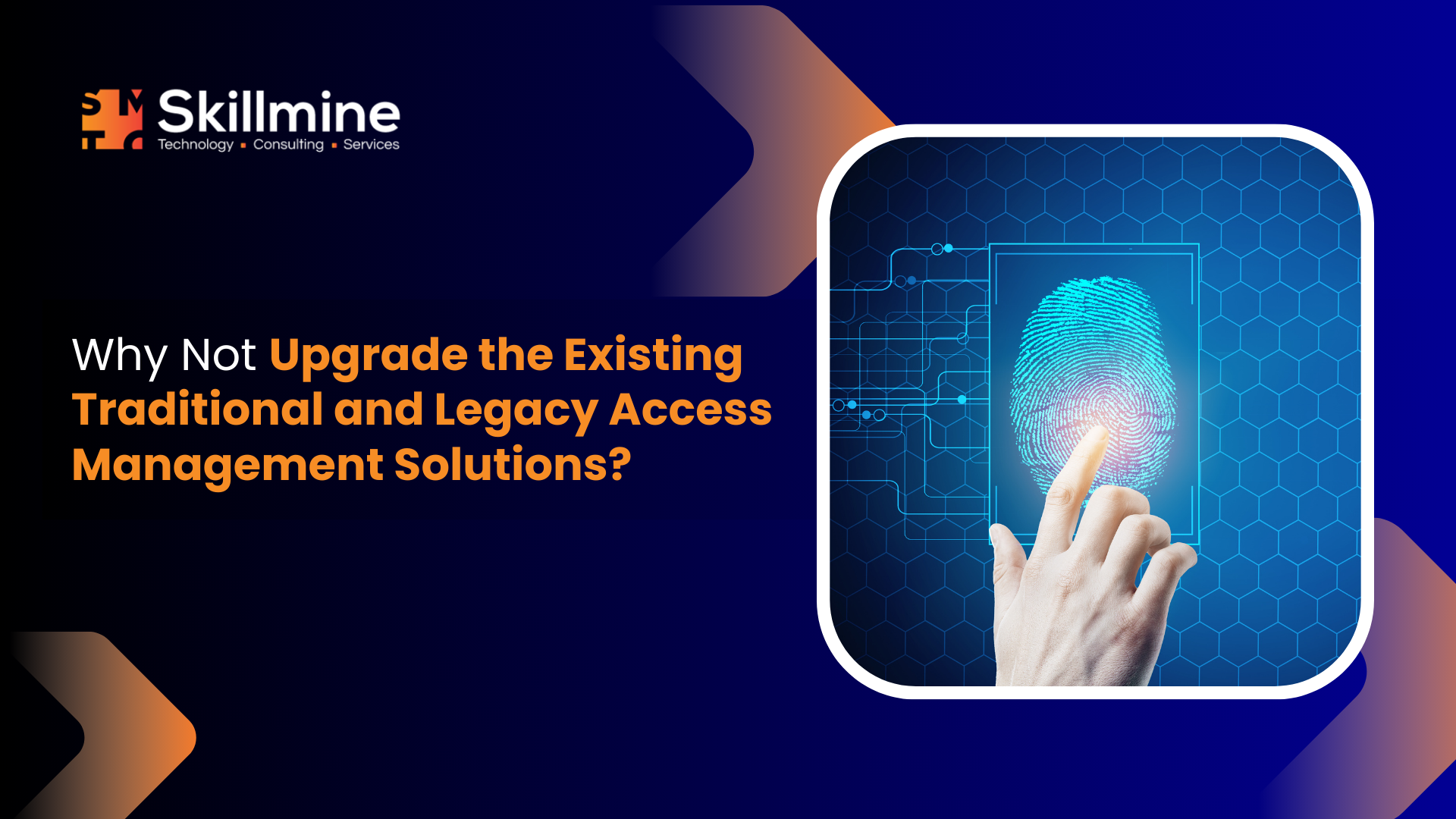Why Are Organizations Still Stuck with Legacy Identity & Access Management (IAM) Solutions Configured Decades Ago?
Many organizations rely on traditional authentication mechanisms, such as simple password configurations or Authentication and Authorization via Active Directory (AD). In these systems, users primarily control password settings or use basic username-password combinations. Some organizations even adopt two-factor authentication (2FA), but they are limited to SMS OTP or Email OTP solutions. These outdated methodologies no longer meet the needs of modern businesses.
“What Key Differences Should Organizations Recognize Between Traditional and Modern IAM Solutions?”
Upgrading a legacy Identity and Access Management (IAM) system is similar to upgrading a car. Like an old car, a legacy IAM system will cast performance issues, outdated safety measures, excessive maintenance requirements, limited comfort, and a lack of modern technology and ease of control.
Many organizations rely on traditional authentication mechanisms, such as simple password configurations or Authentication and Authorization via Active Directory (AD). In these systems, users primarily control password settings or use basic username-password combinations. Some organizations even adopt two-factor authentication (2FA), but they are limited to SMS OTP or Email OTP solutions. These outdated methodologies no longer meet the needs of modern businesses.
“What Key Differences Should Organizations Recognize Between Traditional and Modern IAM Solutions?”
Upgrading a legacy Identity and Access Management (IAM) system is similar to upgrading a car. Like an old car, a legacy IAM system will cast performance issues, outdated safety measures, excessive maintenance requirements, limited comfort, and a lack of modern technology and ease of control.
A modern IAM solution addresses these pain points:
- Safety Measures: Legacy systems rely on outdated authentication methods, such as password-only or SMS/email OTP. These systems are highly vulnerable to malicious attacks, phishing, and ransomware.
- Comfort Issues: Poor user experience due to limited scalability and system performance.
- Continuous Maintenance Work: Manual processes for user provisioning and de-provisioning increase the cost of maintenance.
- Technological Advancements: Lack of control over role-based access management for departments or user groups. Compatibility issues with newer applications.
- Ease of Control: As the user base grows, there is difficulty in managing the increased Turnaround Time (TAT)and incident response times.
Just as when upgrading a car, one must consider the safety, features, comfort, adaptability, and technological capabilities; one should apply the same rationale while upgrading to a modern IAM solution. Here are the key benefits of modernizing IAM systems:
Key Benefits of Upgrading IAM Solutions:
- Varied Authentication Modes: A modern IAM solution allows admins to define multiple authentication modes, including group-based policies, based on department needs and end-user requirements.
- Reduced Manual Intervention: Once the configuration is complete, provisioning and de-provisioning become automated, reducing the need for manual processes.
- Multi-Factor Authentication (MFA) Options: Modern IAM systems offer varied MFA options, allowing end-users to choose their preferred method based on departmental policies.
- Enhanced User Experience: Upgraded IAM systems improve the user experience, reducing complaints and providing a more streamlined process.
- Enhanced Security Posture: Modern systems provide improved security, reducing the risk of data breaches and unauthorized access.
- Efficient Log Monitoring and Compliance: With better log identification and tracking, modern IAM solutions ensure regulatory compliance and smooth audit cycles by providing the necessary evidence.
- Scalability for Future Growth: IAM systems can scale as organizations grow to accommodate more departments and users.
- Improved Monitoring and Response Time: Modern IAM solutions offer better monitoring capabilities and reduce response times for potential security incidents.
- Seamless Application Integration: Modern IAM systems support new-age applications like OAuth, OpenID Connect, SAML, Kerberos, Radius, AD, and LDAP, allowing easier integration with the latest technologies.
- Flexibility and Adaptability: Up-to-date IAM systems allow for flexibility to upgrade in line with emerging technologies and trends like cloud, mobile, and IoT, offering cost reductions and improved ROI.
Conclusion
In a rapidly evolving digital landscape, legacy IAM solutions fall short of meeting modern business demands.
Skillmine Authenticator empowers organizations with a robust, secure, and scalable Identity and Access Management (IAM) system. From advanced Multi-Factor Authentication (MFA) to automated provisioning and de-provisioning, it ensures enhanced security and seamless user experiences. With integration capabilities for modern applications and scalability to accommodate growth, Skillmine Authenticator is designed to future-proof your business while reducing operational overhead. Upgrade your IAM strategy today and experience a solution built for the challenges of tomorrow.
Skillmine Authenticator empowers organizations with a robust, secure, and scalable Identity and Access Management (IAM) system. From advanced Multi-Factor Authentication (MFA) to automated provisioning and de-provisioning, it ensures enhanced security and seamless user experiences. With integration capabilities for modern applications and scalability to accommodate growth, Skillmine Authenticator is designed to future-proof your business while reducing operational overhead. Upgrade your IAM strategy today and experience a solution built for the challenges of tomorrow.





